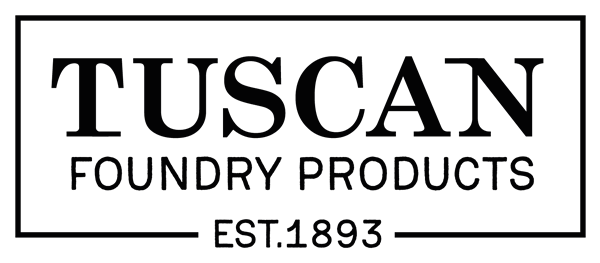

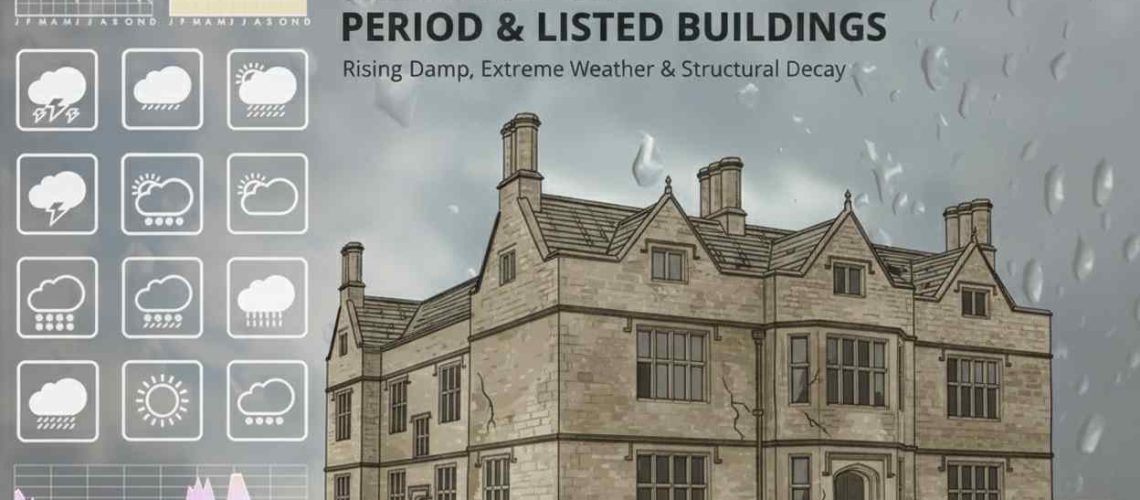
Adapting period and listed buildings to withstand 21st-century rainfall is one of the most pressing challenges facing architects, conservationists, and property owners today. With climate change intensifying rainfall patterns across the UK, these architectural gems require expert solutions that preserve their heritage while enhancing their resilience.
Specialists in delivering bespoke rainwater systems and traditional cast iron goods tailored to the unique demands of heritage properties, Tuscan Foundry provides solutions to maintain architectural integrity while safeguarding these buildings against increasingly severe weather conditions.
The UK’s rainfall is no longer predictable or gentle. In recent years, climate change has led to a significant increase in both the frequency and intensity of storms.
Historical data show that rainfall during the wettest days has increased, leading to more surface water flooding and a strain on existing infrastructure. For period properties, this presents a serious threat: roofs can shed large volumes of water quickly, overwhelming small or damaged gutters and downpipes.
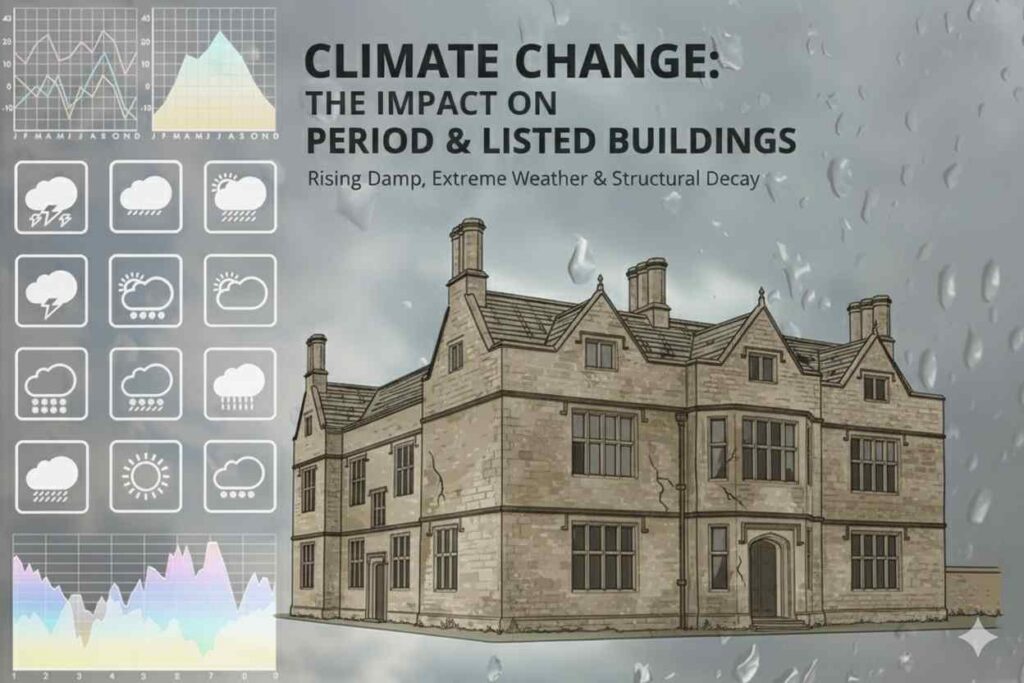
These challenges often result in the soaking of external masonry and rising damp; overflowing gutters leading to rotten window frames and fascia boards; internal water penetration, especially around chimneys and eaves; erosion of stone detailing and brick mortar.
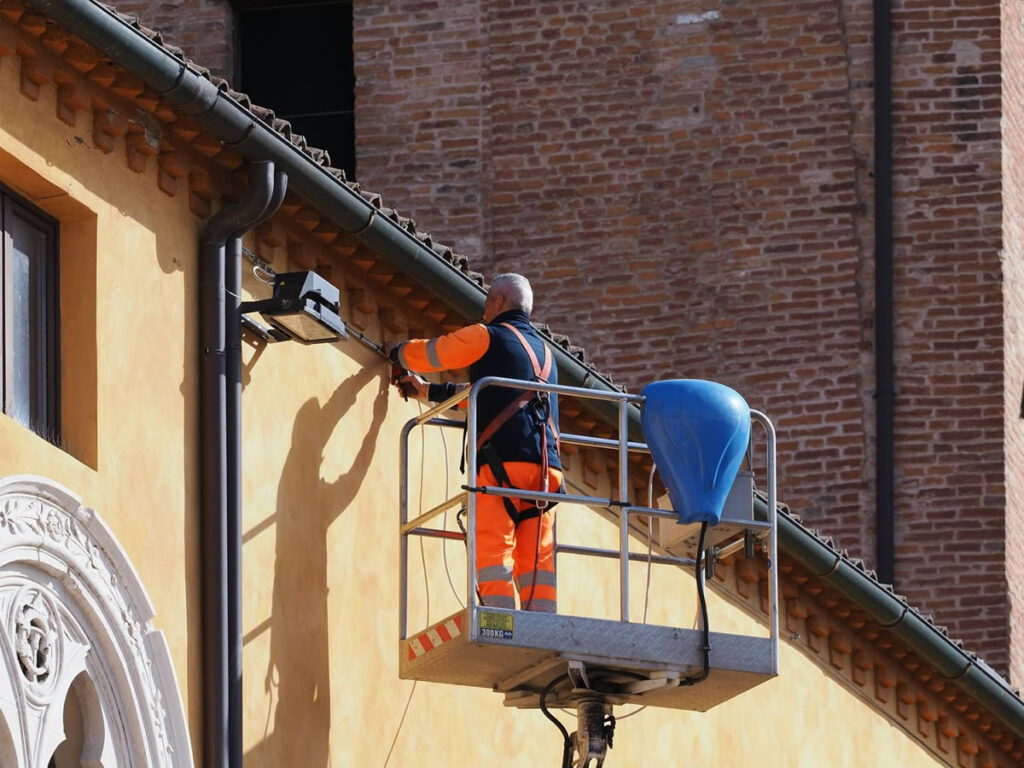
Proactive adaptation is key. For listed and period buildings, historically appropriate materials and systems that meet both conservation and performance standards are crucial for preserving the historical aesthetic and integrity.
Tuscan Foundry Products offers a strategic and sympathetic solution.
Our process includes:
These upgrades not only protect—they enhance the building’s long-term usability and reduce ongoing maintenance costs.
Cast iron has been a pillar of British architecture since the late 18th century. Initially popularised during the Georgian and Victorian periods, it became the sought-after material for external rainwater systems due to its strength, longevity, and versatility. Guttering, downpipes, hoppers, and even decorative elements like rainwater heads were cast in iron, forming a reliable drainage network on thousands of buildings.
Its enduring popularity stems from:
Tuscan Foundry Products continues this legacy today, supplying and restoring traditional cast iron rainwater goods that mirror their historical predecessors in form and function.

The UK is experiencing heavier and more frequent downpours, putting historical buildings at risk of water damage. According to the Met Office, rainfall levels have increased significantly over the past few decades, with winter rainfall experiencing the most substantial rise. This has led to flooding, damp penetration, and structural deterioration, particularly in older buildings that were not designed for such conditions. Historic properties often lack the capacity to cope with the volume, speed and inconsistency of modern rainfall. Original drainage systems may be undersized, poorly maintained, or altered with inappropriate modern material, resulting in overflowing gutters, water ingress, and long-term damage to masonry and timber.
Listed and period buildings are often protected under conservation legislation, which prohibits inappropriate alterations. That means plastic gutters, PVC downpipes, or clumsy modern drainage systems are not only visually inappropriate but legally unsuitable.
Conservation officers and planning departments require sympathetic restoration and adaptation. That’s where Tuscan Foundry Products can support you with our extensive experience in traditional cast iron rainwater
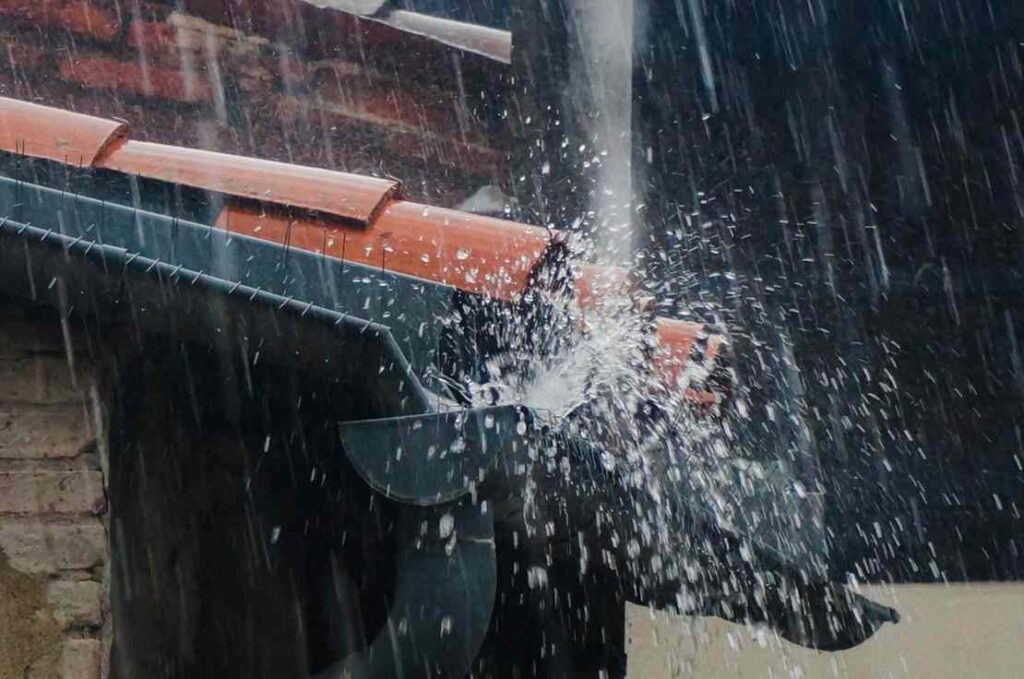
goods, ensuring compliance with heritage standards while providing robust protection against the elements.
Our technical department is on hand to offer advice and arrange site surveys and inspections.
Cast iron remains the material of choice for heritage rainwater systems. It’s durable, sustainable, and aesthetically sympathetic with period architecture. Unlike modern materials, cast iron can last for over 100 years with proper maintenance, making it a long-term investment in the building’s future.
Tuscan Foundry supplies cast iron gutters, downpipes, hoppers, and fixings manufactured to traditional patterns. We also offer bespoke fabrication services to match existing or historic profiles, ensuring a seamless integration with the original design.
Upgrading rainwater systems in historic buildings requires a strategic approach. It’s not just about replacing gutters; it’s about understanding the building’s architecture, local rainfall data, and water runoff patterns.
Our team conducts detailed assessments to determine the correct size, position, and number of rainwater outlets. We also consider the impact of gutter angle, roof pitch, and eaves detail. This ensures the system not only functions effectively but also meets the visual expectations of conservation authorities.
Many historic buildings boast elaborate architectural features that must remain visible and unaltered. Tuscan Foundry Products excels at designing rainwater systems respecting these features. We offer custom hoppers with decorative motifs, ornate brackets, and pipework that complement stone or brick facades.
Our heritage clients appreciate our attention to detail. Whether it’s replicating a 19th-century ogee gutter or casting a bespoke emblem into a hopper head, we blend craftsmanship with engineering precision.
This 18th-century Georgian residence suffered from recurring damp due to undersized Victorian-era gutters. Tuscan Foundry Products replaced the rainwater goods with cast iron deep flow gutters and round downpipes, matching original profiles. The upgrade drastically reduced water ingress while preserving its period charm.
An iconic timber-framed Tudor structure, the Market Hall needed a sensitive solution. By providing bespoke hoppers and downpipes in a matt black finish to blend with the oak beams, drainage was improved without compromising aesthetics.
Built in the early 1800s, St. Peter’s faced substantial water runoff from its steep slate roof. Tuscan Foundry supplied extra-wide cast iron gutters and custom-designed fixing brackets to fit the stone eaves, enhancing durability and protecting the historic stonework.
This medieval municipal building had suffered decades of ad-hoc repairs. Our full-system replacement used traditionally cast ogee gutters and vertical pipes that matched the surviving original features. The result was a restored drainage system that met conservation officer approval.
A listed row of early Victorian townhouses required uniform rainwater goods for aesthetic consistency. We supplied matching gutter and pipe profiles for the entire terrace, improving overall drainage and visual coherence across the facades.
Working on listed buildings means collaborating with planners, architects, and heritage specialists. Tuscan Foundry Products regularly provides technical drawings, specification sheets, and on-site consultation to support applications for listed buildings.
Our experience ensures projects move smoothly through the approvals process, saving clients time and money. All our cast iron products meet or exceed BS 460 standards and can be finished in primer or a choice of heritage colour topcoats.
Beyond durability, cast iron is one of the most sustainable materials available. It is 100% recyclable and requires fewer replacements over a building’s lifetime compared to plastic. By choosing cast iron from Tuscan Foundry, property owners are making a responsible environmental choice that aligns with the long-term preservation ethos.
As rainfall becomes more intense and unpredictable, period and listed buildings must be adapted without the loss of their historic essence. Tuscan Foundry Products offers the expertise, materials, and craftsmanship needed to protect our architectural heritage.
By combining tradition with performance, we help ensure these buildings remain standing for generations to come—elegant, authentic, and protected against the elements.
Cast iron matches the visual style of period architecture and provides exceptional durability. It lasts over a century with minimal maintenance and complies with conservation standards.
Generally, no. Conservation officers typically prohibit plastic and other modern materials that detract from the building’s historic character. Cast iron is the approved material of choice.
Yes. Tuscan Foundry Products specialises in bespoke casting and replication services, ensuring exact matches with existing or original profiles.
We offer a protective primer as standard and can provide factory-applied topcoats in a range of heritage colours to suit your building’s aesthetics.
Our team conducts assessments based on roof size, pitch, and rainfall intensity. We provide recommendations to ensure your system performs optimally.
Absolutely. We provide detailed technical documentation to support listed building applications and liaise with conservation officers when needed.
Occasional cleaning and repainting every 5-10 years will keep your cast iron rainwater goods in top condition for decades.

At Tuscan Foundry Products, we are passionate about preserving the past while preparing for the future. For over 130 years, we have crafted traditional cast iron rainwater systems and architectural products that support conservation, longevity, and aesthetic integrity.
Contact Us – today to discuss how we can help protect your period or listed property.